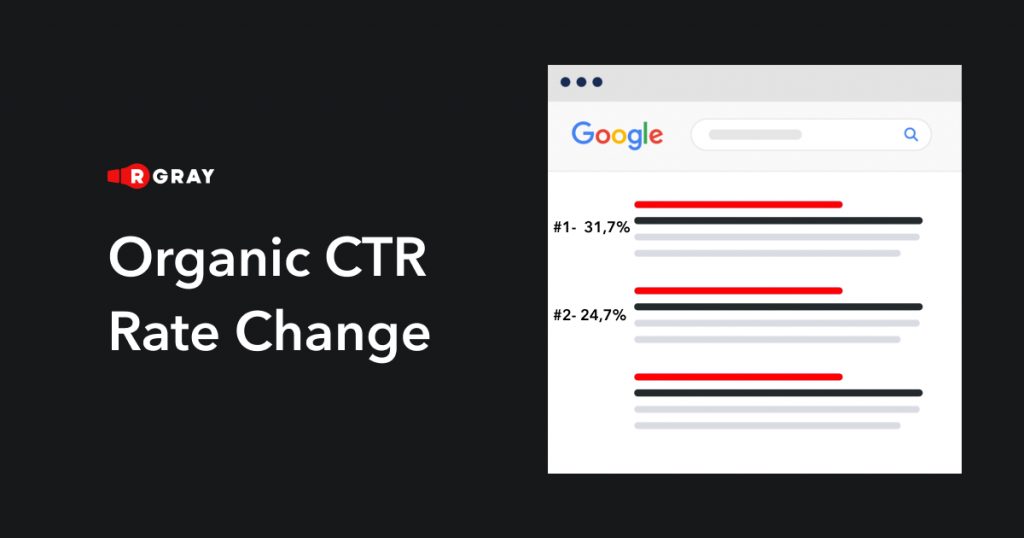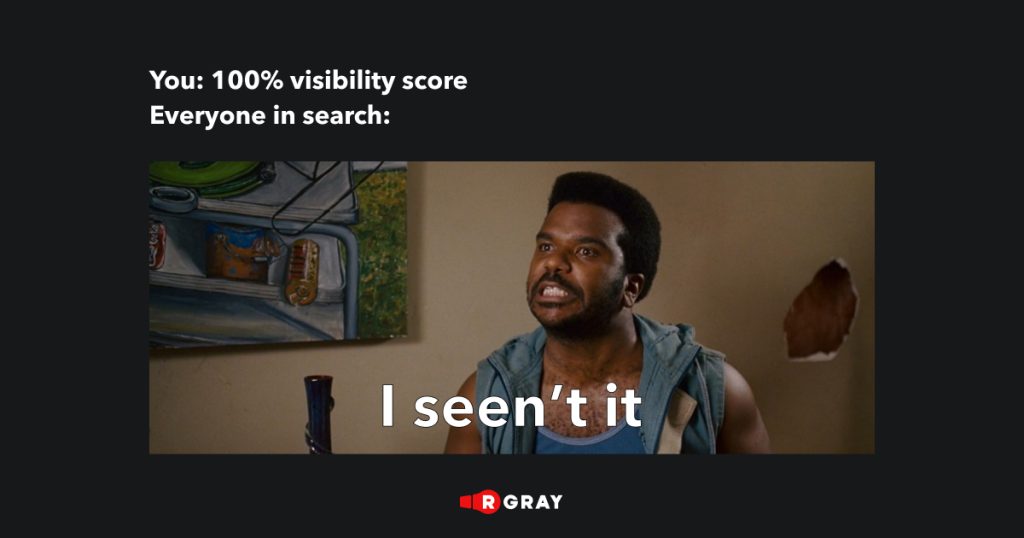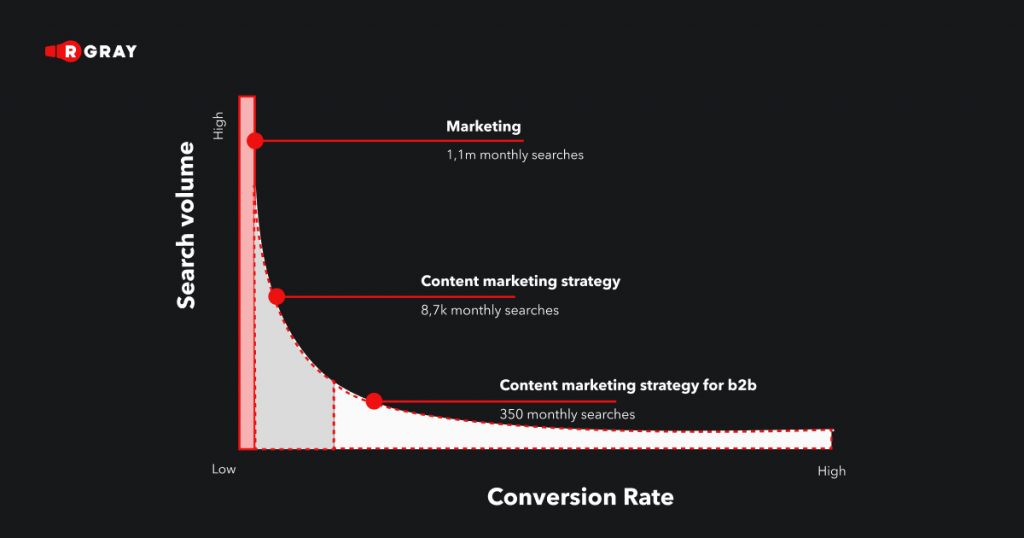You’ve probably asked yourself, why your website isn’t visible on Google search results. Sometimes determining the cause of an SEO exposure loss is simple. To acquire great website visibility score, you must first grasp the specific search engine algorithms and then design a solid strategy based on the knowledge and insights you gain.
In this article, we will focus on different aspects of search visibility, define the reasons behind loosing visibility on SERP and provide advice on how to improve search engine visibility of your website. Without further ado, let’s dive right into it!
Search Engine Visibility Explained
First of all, what is search visibility? Search engine visibility (also SEO domain visibility) is a ratio of the actual number of clicks you are getting to all available clicks you can potentially get. It basically represents the share of clicks in the organic search results.
A low search engine visibility score means that you are getting a few clicks which indicate that people struggle to find you among the first search results or at least on the 1st page. Ranking and visibility are two interdependent metrics – if your ranking drops, so does the search visibility.
Now that we’ve found out the connection between SEO ranking and visibility, let’s break down another common misunderstanding about SEO visibility.
Search visibility is usually mistaken for SEO traffic. While SEO visibility is expressed in percentage – search traffic is simply the number of clicks you are getting. Search traffic can experience an ebb and flow while SEO visibility remains steady – not the other way around.

SEO visibility score gives a whole bunch of insights on what needs to be optimized to increase your search engine ranking.
How to Calculate Google Visibility Score?
As previously stated, the search visibility score is a metric that defines what percentage of all possible organic clicks your website receives.
If you google “search engine visibility checker” or something else related to “how to increase search engine visibility” topic, you will see a lot of websites offering people to check their pages’ visibility score through SEO tools. The most popular resources probably are – MOZ, Serpstat, Ahrefs, and Semrush. These platforms are considered to be leaders in their niche and all of them developed their own versions of online visibility score.
Even though the approaches they use to calculate the same metric are slightly different – the data points are similar. CTR, ranking position, and the monthly volume of the specific keyword altogether contribute to the calculation of the organic search visibility.
Ahrefs, for instance, calculates the score by dividing the traffic to the site by the total search traffic for all keywords. That’s why ranking for keywords with larger search volumes has a greater impact on google search visibility.
Overall, the metric helps a lot when analyzing SEO performance. You are getting insights not just from raw numbers but from correlations and traffic share proportions.
What Is a Good Search Visibility Score?
Have you ever wondered: What is a good search visibility score? What should I aim for? In a nutshell, there is no such thing as a perfect visibility score. It hugely depends on the website’s niche and the industry’s size.
Visibility scores vary from 0% to 100%. 0% search visibility means you have no pages ranking in the top 50 search results. If your website is 100% visible – it takes all the spots in organic results – the traffic for a given keyword is all yours.
According to the research conducted by Backlinko, over 31,7% of clicks are received by the top 1 search result in comparison to the second spot with 24,7% of traffic clicks. It doesn’t surprise us that as we move down the SERPs the traffic decreases too.

Therefore, your biggest goal and priority will be to achieve as high a search visibility score as possible. A sudden drop in SEO visibility score indicates problems you should overcome in the early stages.
The Most Common Reason for the SEO Visibility Loss

If there is a belief that your website’s visibility has shifted, the first step you should take is to figure out why it is experiencing a visibility crash. Several common reasons contribute to SEO visibility loss:
- Search engine updates. Google updates are a never-ending story. As the search engine experiments with its ranking algorithm, even the websites that seem to have no technical flaws can face an SEO visibility loss after an update.
- Backlinks. Both lost and gained backlinks can seriously damage your visibility score. A sharp decline of backlinks from high-quality websites is as dangerous as a sudden increase of backlinks from untrusted sources.
- Snippets. Features Snippet appears above the 1st ranked SERP result and gets approximately 8,6% of all organic clicks, according to Backlinko research. So, if you can optimize the content to be visible in Featured Snippet, you can significantly increase your organic CTR.
- Increased competition. Just like you are finding ways to improve search engine visibility of your website, your competitors are working hard to achieve the same goal too. In this case, you have to conduct a competitor analysis to monitor the changes they’ve made.
Before you panic and rush right into fixing problems, conduct a thorough keyword ranking analysis to determine the extent of the loss. The sooner you identify the potential issues, the better your site’s odds of recovery. In the next section, we’ve covered the second popular question about search visibility: How to increase search engine visibility on google (SERP)?
6 Ultimate Tips to Increase Visibility on Google
Google algorithms are top-notch. They evolve by learning from users’ online activities. The learning process is always mutual. Marketers strive to figure out what needs to be done to increase visibility on Google and boost the chances to enhance its ranking position.
Here are 6 tips you should know to improve organic search visibility:
Insert internal and external links
Building backlinks to your site is one of the two vital ranking factors for Google. Hyperlinks to your web pages indicate that the content is high quality, relevant, and brings value to those who linked to it. There are two types of links – external and internal. Both significantly impact page position in SERPs which directly leads to increased Google search engine visibility.
Internal links are links from one page to another on the same domain. They pass page authority to less visible pages and help search engine bots easily navigate across your website. By grouping pages into topic clusters, you can easily determine which pages should link to each other providing relevant and valuable information for prospects.
External links are links to other websites’ content. These are used when you want to show readers that you’ve done some research. And to support your claims you link to authorized quality content. The rule “quality over quantity” applies there too. It is better to be linked by a few lead websites in your industry than a bunch of suspicious ones.
The process of link building is relational, strategic, and takes some time. It builds a sense of trust, respect, and gratitude from both points of view.
Optimize meta tags

Having a page optimized for meta tags positively affects Google’s crawling and indexing behavior. Even though they have no direct effect on a page’s SEO visibility, meta tags improve click-through rate driving more traffic. The tags down below are basic and help provide a better user experience for visitors.
The heading structure consists of different levels which vary from H1 to H6. Each level corresponds with proper importance: the H1 heading is essentially a page title when H2-H6 subheadings represent additional sections.
Pro tip from us 👉 : make sure your keyword fits naturally in the heading. Otherwise, it is better to focus precisely on describing the page’s content rather than have the heading exactly match the targeted keyword.

The title tag usually matches the heading tag. This is a common practice. Effective title performs well both on search results and the page itself. Take note that long titles (above 60 characters) get cut off on search results, so you may consider creating shorter versions to be entirely seen.
A meta description is an HTML code that briefly provides information about your page. It increases clickthrough rate and visits from organic search. When creating a meta description aim for around 160 characters, include 1-2 keywords, and use hyphens if necessary.
To see how your search result will appear in SERPs, try using preview tools or simulators before publishing.
Create a sitemap
An XML sitemap is a file of code on your web server that helps Google discover, crawl, and index essential pages quickly. It is a list of relevant website URLs. By providing information on the structure of your website, sitemap makes indexing easier, which increases your chances of updating the page’s rank faster. A sitemap contains details on when the page was last changed, expected change frequency, and priority tag – page’s level of importance.
To make search engines find a sitemap, you need to submit it to Google Search Console. After the search engine successfully crawls a file you can access the report to see which pages were indexed and which were excluded.
Check your URL structure
Url stands for Uniform Resource Locator and is a special address of the resource on the Internet. A URL consists of protocol, domain name, and path. One of the best practices to optimize web addresses is to use the HTTPS protocol. It is a secure version of HTTP, which means that the information on the page is encrypted.

An SEO-friendly URL might look like that: https://rgray.io/blog/the-one-and-only-brand-platform/. The URL features the main page keyword – brand platform – explaining to both Google crawling bot and the reader what it is about.
Use short and descriptive URLs. Thus people will immediately understand what the page is about before even visiting it. It not only improves user experience but also helps Google understand what your page is about.
Yet often overlooked, an SEO-friendly URL is essential to any online promotion strategy.
Provide mobile friendly design

Is your web page mobile friendly? Did you know that mobile devices have taken the lead at 55% of the market share beating desktop users by 42% according to the latest data? We can conclude – creating a mobile-friendly website is a critical factor in mobile content strategy. When optimizing a page for mobile format pay attention to text size, spacing, and matching with the original design on other devices to avoid confusion.
Implementing responsive design lowers bounce rate and increases page view per visit.
Apart from this, the loading speed on mobile devices should be a major concern too. Load the images exactly in the same size they will be displayed on the page and compress them to reduce weight.
Focus on long-tail keywords
Even though long-tail keywords embrace less search volume they tend to have a high conversion rate. Consequently, it helps to target visitors with more specific search intent, reducing traffic that isn’t focused or committed to your services.
For instance, the keyword “marketing” embraces a broad topic and is extremely competitive. You have nearly zero chances to be seen at all. “Content marketing strategy for b2b” will bring less traffic but will have a high conversion rate.
According to the search demand curve, long-tail keywords are used in 7 out of 10 cases. They make up a majority of all search queries and become inevitable through the evolution of the buyer’s journey.

Lower competition equals lower costs. Undoubtedly, when promoting a product or service by paid advertising, identifying long-tail keywords with low click-through rates seem more appealing to your budget and ROI.
Conclusion
We hope our collection of SEO technical practices and on-page optimization attributes helped you detect, examine, and improve visibility of your website a little more. Use it to make constructive decisions that would enhance your digital presence.
To be honest, when your website is experiencing a visibility loss you are ready to do anything to figure out what’s going on. It is a very stressful situation that allows you to review the page optimization strategy and create a solid one to boost organic visibility score. Remember to mostly focus on users but be aware of search engine needs altogether.
Subscribe to keep up with more insights we constantly upload on our website.
